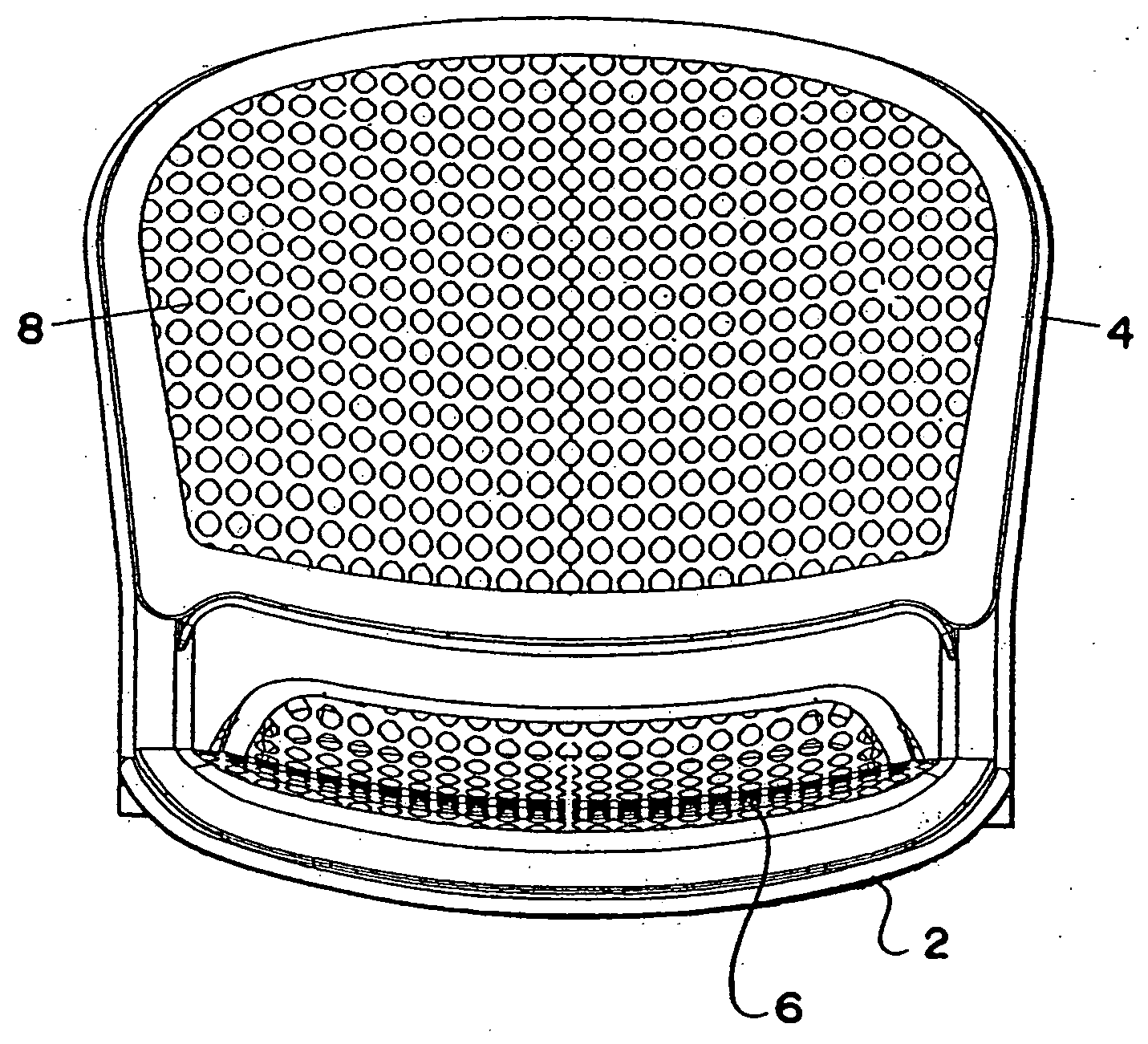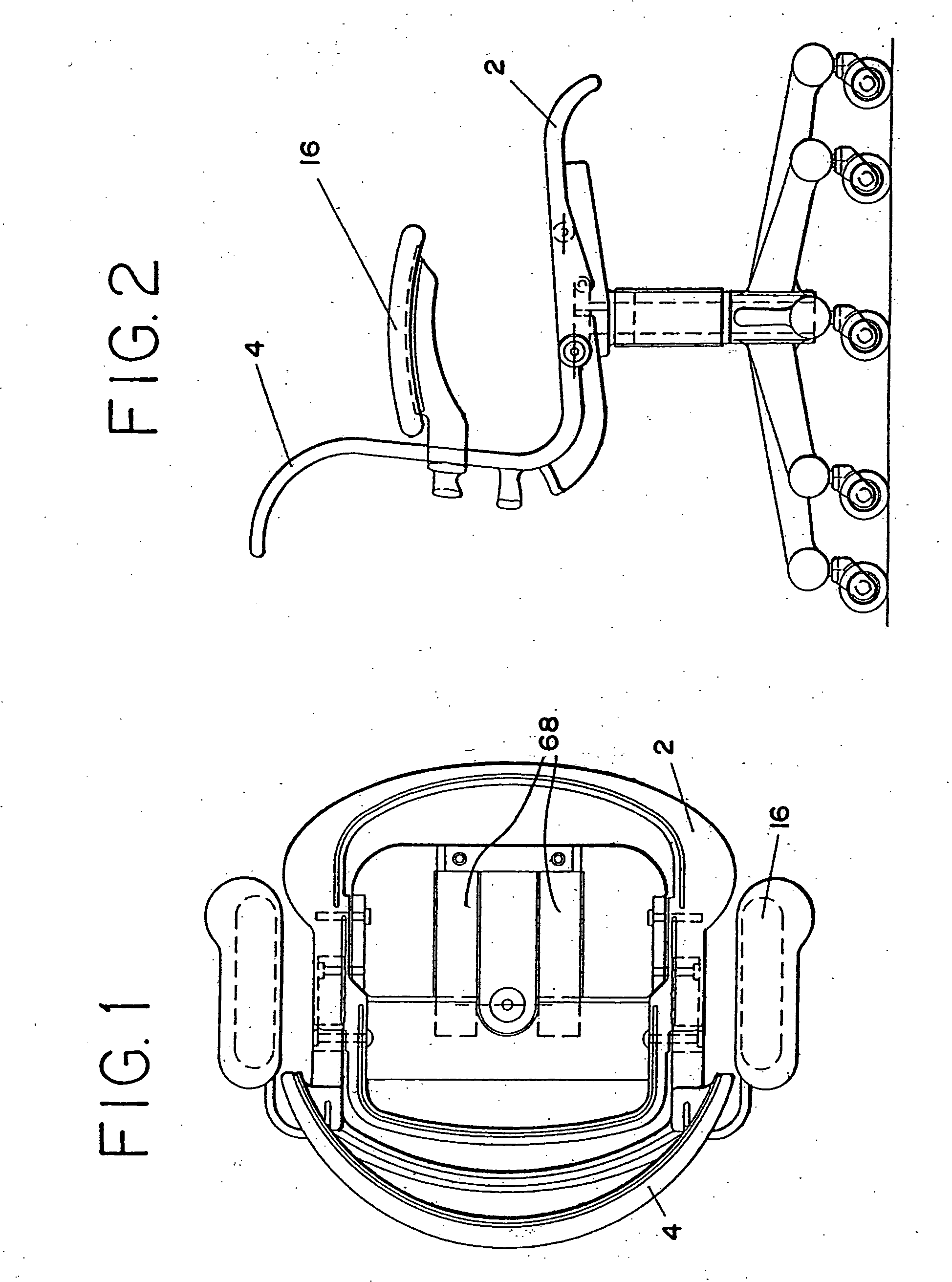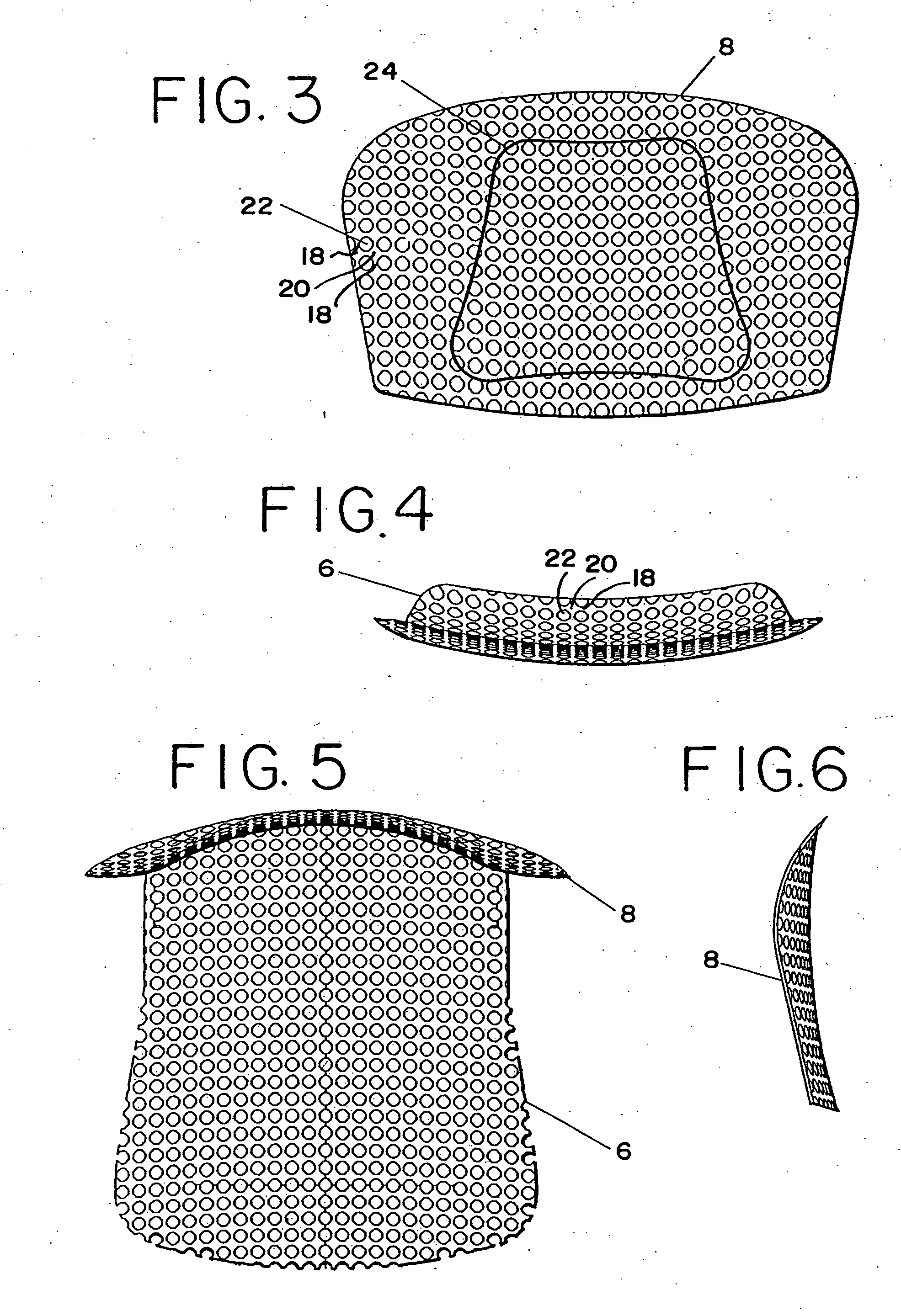Seating structure having flexible support surface
a flexible, seating technology, applied in the field of seating and seating, can solve the problems of excessive heat build-up between the seating surface and the occupant, difficulty in adjusting the firmness and corresponding support in different areas etc., and achieves the effect of increasing airflow, high strength, and reducing the amount of foam padded cushions
- Summary
- Abstract
- Description
- Claims
- Application Information
AI Technical Summary
Benefits of technology
Problems solved by technology
Method used
Image
Examples
Embodiment Construction
:
[0099] While the invention will be described in connection with one or more preferred embodiments, it will be understood that we do not intend to limit the invention to those embodiments. On the contrary, we intend to cover all alternatives, modifications and equivalents within the spirit and scope of the invention.
[0100] Referring to FIGS. 22-29, 38 and 39, various embodiments of a seating structure, configured as a chair, are shown. It should be understood that the term “seating structure” includes any structure intended to support the body of a user, whether standing, sitting or lying, and includes without limitation chairs, sofas, benches, automotive seats, stools, suspended structures, etc.
[0101] The chair 26 includes a back 28 having a pair of support arms 30 pivotally connected to a control housing 40 at a first pivot axis 32 and pivotally connected to opposite sides of a seat 44 at a second pivot axis 34. The seat 44 is pivotally connected to a link 42 at a third pivot ax...
PUM
| Property | Measurement | Unit |
|---|---|---|
| depth | aaaaa | aaaaa |
| depth | aaaaa | aaaaa |
| width | aaaaa | aaaaa |
Abstract
Description
Claims
Application Information
 Login to View More
Login to View More - R&D
- Intellectual Property
- Life Sciences
- Materials
- Tech Scout
- Unparalleled Data Quality
- Higher Quality Content
- 60% Fewer Hallucinations
Browse by: Latest US Patents, China's latest patents, Technical Efficacy Thesaurus, Application Domain, Technology Topic, Popular Technical Reports.
© 2025 PatSnap. All rights reserved.Legal|Privacy policy|Modern Slavery Act Transparency Statement|Sitemap|About US| Contact US: help@patsnap.com



